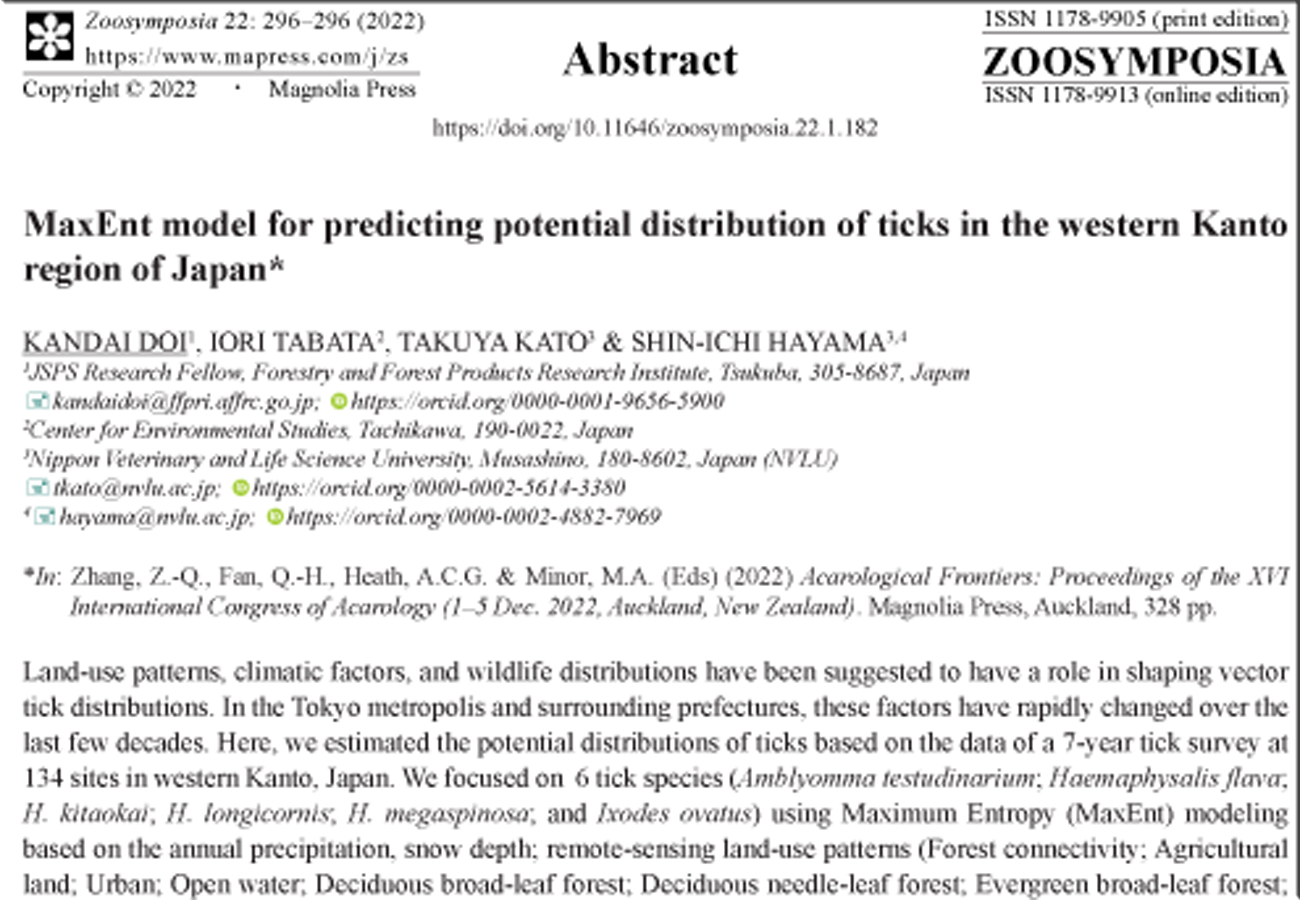Abstract
Land-use patterns, climatic factors, and wildlife distributions have been suggested to have a role in shaping vector tick distributions. In the Tokyo metropolis and surrounding prefectures, these factors have rapidly changed over the last few decades. Here, we estimated the potential distributions of ticks based on the data of a 7-year tick survey at 134 sites in western Kanto, Japan. We focused on 6 tick species (Amblyomma testudinarium; Haemaphysalis flava; H. kitaokai; H. longicornis; H. megaspinosa; and Ixodes ovatus) using Maximum Entropy (MaxEnt) modeling based on the annual precipitation, snow depth; remote-sensing land-use patterns (Forest connectivity; Agricultural land; Urban; Open water; Deciduous broad-leaf forest; Deciduous needle-leaf forest; Evergreen broad-leaf forest; Evergreen needle-leaf forest; Bamboo forest; Grassland; Bareland), and the distributions of five common wildlife species [sika deer (Cervus nippon); wild boar (Sus scrofa); raccoon (Procyon lotor); raccoon dog (Nyctereutes procyonoides); masked palm civet (Paguma larvata)].
References
Doi, K., Kato, T., Tabata, I. & Hayama, S. (2021) Mapping the potential distribution of ticks in the western Kanto region, Japan: Predictions based on land-use, climate, and wildlife. Insects, 12, 121095. https://doi.org/10.3390/insects12121095


